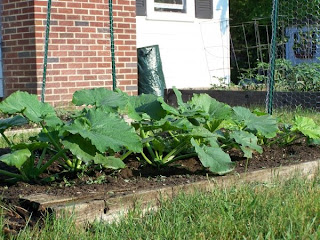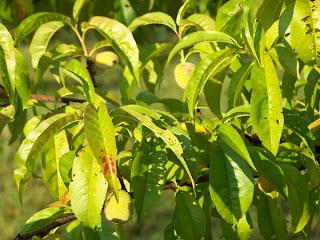We know that gluttony is classified as one of the seven deadly sins. St. Paul, in a striking phrase, comments on those who do evil as being those "whose God is their belly" (Phillipians 3:19).
St. Benedict, in his Rule for monks has a few things to say. He discusses the quantity of food and of drink that the monks should be allowed, the times for eating, special rules for Lent, makes provision for a reading during the meal, and also for those who should help in the kitchen each week and for the cellarer, an important office that oversees most of the monastery's material goods.
I begin by looking at his rule (Chapter 41) for times for eating:
From holy Easter till Pentecost let the brethren dine at the sixth hour and take supper in the evening. From Pentecost on, however, during the whole summer, if the monks have no work in the fields and the excess of the heat doth not interfere, let them fast on Wednesday and Friday until the ninth hour; but on the other days let them dine at the sixth hour. This sixth hour for dinner is to be continued, if they have work in the fields or the heat of the summer is great. Let the Abbot provide for this; and so let him manage and adapt everything that souls may be saved, and that what the brethren do, they may do without having a reasonable cause to murmur. From the ides of September until the beginning of Lent let them always dine at the ninth hour. During Lent, however, until Easter, let them dine in the evening. But let this evening hour be so arranged that they will not need lamp-light during their meal; but let everything be finished whilst it is still day. But at all times let the hour of meals, whether for dinner or for supper, be so arranged that everything is done by daylight.
Using modern time keeping, from Easter until Pentecost the main meal of the day should be taken around noon, with a light supper in the early evening (before sunset). From Pentecost until mid-September this is the same, but on Wednesdays and Fridays a partial fast should be kept, with meals delayed until around 3 p.m. From mid-September until the beginning of Lent, the main meal should be around 3 p.m. During Lent, only one meal per day, and that in the evening!
The initial reaction of a "modern" Catholic might well be "Well, that's for monks" or, less charitably, "That's nuts!" It's well to keep in mind that until the rules of fasting began to be mitigated (which for lay people in the West began in the 13th century), one meal per day in fasting seaons (Advent, Lent, Embertides, Vigils) was expected of everyone! And most of those were to be meatless too. Of course, our fasting rules now are so light as to be forgettable (and no doubt they are by the majority of Western Catholics). Even a century ago, the rules were much stricter (see here and here), and much closer in sense to the eating patterns laid down by St. Benedict.
Another thing that might slip by...no breakfast! But what about all that "most important meal of the day?" stuff. Well, that was a concept that apparently didn't occur to the ancients.
I do know that when I lived in Colombia as an exchange student in high school people generally didn't eat breakfast, and if they did, they ate very minimally...a bit of bread with their coffee (hey, in Colombia you always had coffee!). We also had a main meal around noon, and a very light supper (bread, occasionally with some cheese or cold sausage) and coffee with milk. Only on a few big feast days did we have anything more substantial for supper. Perhaps that was the Catholic culture that hadn't been diluted yet. Looking back, it was certainly very Benedictine!








